WOMEN’S HISTORY MONTH
Getting to Know Inspiring Women Leaders at NIH
In the third and final installment of this series on NIH women leaders, several share their stories, interests and advice.
Harbison Urges Pursuit of Interesting Questions vs. Publishing Metrics
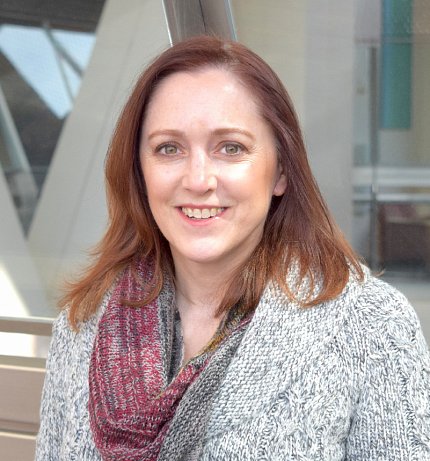
Photo: MEGAN FELDMAN
For as long as she can remember, Dr. Susan Harbison has always been interested in understanding how things work.
When she was a child, a button on her transistor radio got stuck. To fix it, she took the cover off. Harbison saw many small, interesting parts. That experience inspired her to take apart other small household appliances. Her mom wasn’t thrilled with her new hobby, so her dad—a fellow tinkerer—brought home old electronics to dismantle.
“Everyone was pretty happy with this arrangement and I’ve been exploring ever since,” recalled Harbison, a senior investigator in the National Heart, Lung and Blood Institute’s Laboratory of Systems Genetics.
Harbison studies the “enduring biological puzzle” of sleep. While it appears to lack an adaptive advantage, sleep is needed by all animals. Over the course of a lifetime, sleep deprivation affects the heart, immune system and emotional well-being.
Sleep is an example of a “complex trait,” meaning it is influenced by many genes and multiple environmental factors. Harbison is using genomic and molecular technologies to identify gene networks that will illuminate the function of sleep as well as the degree of conservation across species.
When she first started her career as a biomedical researcher, she never heard about the number of papers she needed to publish in a journal to get a position in research. Harbison was free to pursue important questions.
Recently, she met with a group of college students. To get hired in an academic position in a scientific field, the students believed they had to write 10 first-author papers with at least one of those papers getting published in a high-impact journal.
“Surprisingly, they made no mention of an important and intriguing research question—or a vigorous and creative research program,” she said. “This disturbing viewpoint is one that needs to be addressed.”
Researchers can rectify the problem by teaching students about and supporting such edicts as the San Francisco Declaration on Research Assessment, which intends to halt the practice of connecting the journal impact factor to the merits of a specific scientist’s contributions.
One of the biggest concerns Harbison’s female trainees have is whether they will be able to juggle the demands of an academic career and the care of their family. The issue influences whether they apply for other academic positions and how long they stay in these posts.
“Flexible work and teleworking policies have been a positive development, though the issue is complex and needs additional study,” she noted.
She encourages the trainees in her lab to read scientific papers beyond their field or organism of choice and to train in more than one field. For example, computational biologists should be familiar with the field of molecular biology and vice versa.
“Creativity comes from reading more broadly and understanding every aspect of your particular project,” Harbison concluded. —Eric Bock
Be a ‘Visible Contributor’
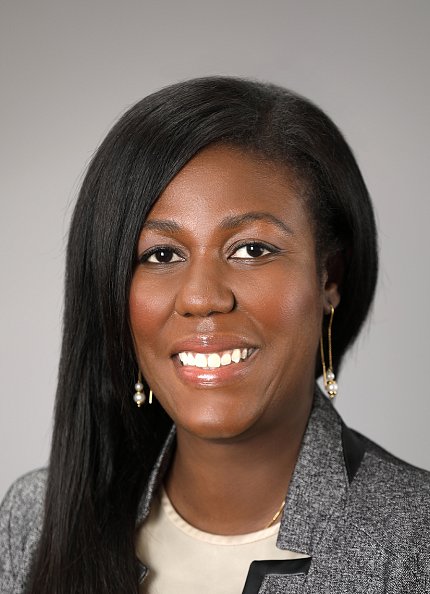
One of Dr. Paule Joseph’s mentors once told her, “You cannot inspire the next generation if you are an invisible contributor (i.e., hidden figure) in the biomedical research enterprise.”
As a woman in science who identifies as Black and Latina, Joseph found those words inspiring. “If other women who paved the way before me hadn’t been highlighted, I might not have taken the same career path in my life,” she said.
Joseph is currently a Lasker clinical research tenure-track investigator, NIH distinguished scholar, and chief of the section of sensory medicine and metabolism (SenSMet) at the National Institute on Alcohol Abuse and Alcoholism (NIAAA) with a joint appointment at the National Institute of Nursing Research (NINR). Her lab seeks to understand how taste and smell (chemosensation) vary across diseases such as substance use disorders and obesity; the group recently added Covid to the list. She first came to NIH in 2012 as a NINR summer intern, subsequently serving as a special volunteer and postdoc before being appointed assistant clinical investigator of SenSMet in 2017. She became lab chief in 2019.
Joseph has “always loved the idea of discovery.” She enjoys asking questions and delving into previously unexplored areas, which ties in well to her second-favorite piece of advice: “Don’t be afraid of following your passion and of doing something that doesn’t fit into a mold.”
In her nursing Ph.D. program at the University of Pennsylvania, Joseph studied the genetics of taste. Studying genetics as a nurse was uncommon and chemosensation was an understudied field to begin with. Early on she was questioned often by many people about her line of inquiry, but she persevered with the support of her mentors.
Joseph remains the only nurse from the Monell Chemical Studies Center who is trained in chemosensation and its psychophysical measures. Her boldness paid off when more people began looking at taste and smell in response to the Covid-19 pandemic. She was prepared to ask and answer questions surrounding these emergent problems.
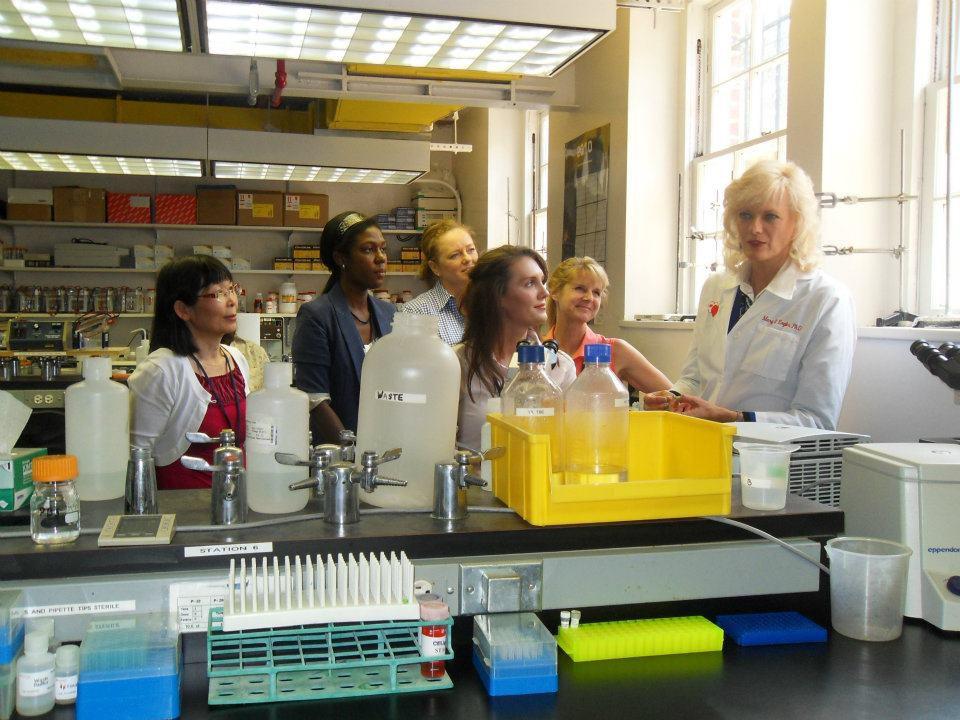
“When you do what you love and ask questions that are important to you, your contributions then become priceless,” she said.
Joseph is deeply committed to mentoring, and especially to creating new opportunities for girls and women in science. She is the director of career development and mentorship for the African Research Academies for Women, an organization that seeks to increase the representation of women in STEM positions around the world. Joseph also mentors in her own lab, receiving an NIAAA Mentoring Award in 2022. She calls that her proudest achievement to date.
When you are a good mentor and encourage others to pay it forward, “the contribution you have as a scientist can last generations,” she said.—Amber Snyder
Making Her Mark in the World
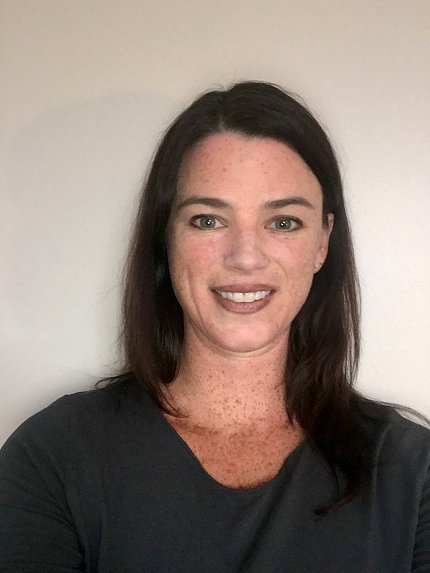
Dr. Rachel Sturke once contemplated going to medical school. Somewhere along the way, though, she became intrigued by medical anthropology and changed course.
“I always had a travel bug and was always interested in global health, particularly the social and cultural determinants of health,” said Sturke, acting deputy director of NIH’s Fogarty International Center. “I had this vision of living abroad and doing on-the-ground public health work.”
During college, Sturke spent time in eastern Africa and later worked in a family planning clinic in Ecuador for more than a year, experiences that fed her interest in travel and global health.
Sturke first arrived at Fogarty in 1999 as an analyst. She left two years later to pursue her Ph.D. in population, reproductive and women’s health.
In 2006, as a newly minted Ph.D., Sturke began working at Fogarty full time in the Division of International Science Policy, Planning and Evaluation. In her current leadership role, she continues to oversee a range of global projects mostly focused on implementation science based in low- and middle-income countries.
“Fogarty gave me really broad exposure to different global health challenges in different regions of the world,” Sturke said. “As I gained more expertise in implementation science, [I found] that’s a space that really resonates with my passion and my interest in bringing research evidence to bear on global health programs and policies.”
During the pandemic, Sturke missed traveling internationally. She looks forward to her first in-person, international work trip to Zambia this spring.
Reflecting on her career thus far, Sturke highlighted the Adolescent HIV Implementation Science Alliance—a collaborative effort to overcome barriers to HIV screening and treatment among adolescents in sub-Saharan Africa—an effort that Sturke conceptualized and leads.
“This alliance feels emblematic of what I’m hoping to catalyze in the worlds of science and global health in my career,” she said. “I’m proud of the fact that, through the collective expertise of the network, we’ve been able to elevate the possibilities and the potential of implementation science to address important global health challenges” in these countries. And through the toughest times of the pandemic, “it was striking to see the humanity and humility that our teams demonstrated.”
Sturke also reflected on being a woman in science. Challenges remain, from work-life balance to the dearth of younger women in leadership positions. But she’s glad to see “normalizing girls and women in STEM is something we’re investing in [as a society] because it’s important to keep moving the dial there.” A mom to two kids, she hopes her career inspires them.
To aspiring young scientists, she would say, “Explore your interests fully across the field before attaching to one area of focus. Often, the way training is set up, you end up thinking you have to do a narrow and deep dive and then you’re attached to that [one area]. I think there’s a lot more flexibility to explore and find your passion. And I think there are a lot of ways to do science that go beyond doing the research itself.” —Dana Talesnik
In Engineering, Logic Rules

In her freshman year of high school, Malee Kaolawanich decided to become an engineer. Many of her classmates talked about medical school, but Kaolawanich did her research and decided on engineering.
“I loved math, science, anything logical,” she recalled. She chose to study mechanical engineering because it is hands-on (“I can see it, so it makes sense to me,” she joked).
These days, she is a senior mechanical engineer with the facilities compliance and inspection section (FCIS) in the Office of Research Facilities (ORF).
Kaolawanich helps support NIH’s aseptic processing facilities (APF), which prepare therapeutic and diagnostic biologic and pharmaceutical products for human use. The products may include those required to follow cGMP (Good Manufacturing Practices) regulations and for use in phase I and II clinical trials.
Kaolawanich and her team review much of the work, processes and documentation that originate from the Division of Facilities Operations and Maintenance under APF groups. Kaolawanich’s role largely involves overseeing the functionality and documentation of heating, ventilation and air conditioning. She and the FCIS team oversee quality assurance throughout the life cycle of each APF to ensure compliance with regulation, including cGMP.
Last fall, Kaolawanich earned a Silent Hero award. “I’m proud that people see me as a good team player,” she said. But, she also takes pride in phases of her career, rather than in achievements.
She’s gratified “to be going through a path of growth” in her career, she said. Big projects are fun, but “even the little things can bring you excitement,” she added.
Another point of pride for Kaolawanich is that she has been the first female mechanical engineer in every position she has held. Engineering is still a very male-dominated field, but she doesn’t want women to be deterred by that.

“We are lucky that most engineering-interested people are logical and use logic to drive their lives,” she observed. She has encountered some differences in gender roles across cultures (such as in her native Thailand) but has found that gender bias does not line up well with logical thinking.
“We all have differences,” she said. “Just look at a person as a person.”—Amber Snyder
Patience and Persistence Are Key
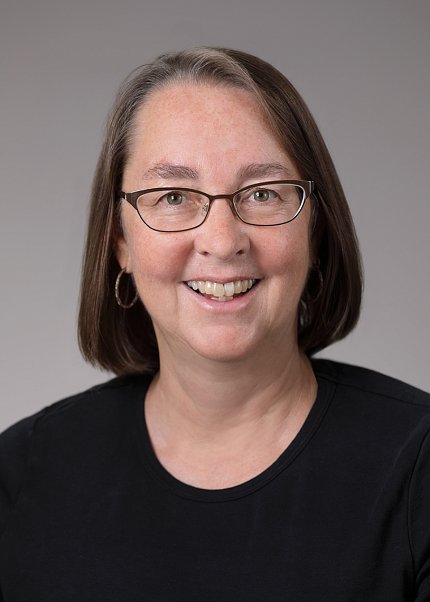
Patience and persistence are two traits that those thinking about a career in research must have, said Dr. Gisela Storz, head of NICHD’s section on environmental gene regulation.
When she first started as an independent investigator, her lab studied redox-sensitive transcription factors and how bacteria and fungi respond to oxidative stress. Recently their attention shifted to the identification and characterization of small, noncoding RNAs and small open reading frames, also known as small ORFs. While the importance of noncoding RNAs has been recognized for some time, accumulating evidence suggests small proteins encoded by the small ORFs act as important regulators in all organisms. Knowledge about the existence and function of these genes that were “missed” because of challenges in their identification has the potential to explain regulatory mysteries and lead to new therapeutic approaches.
“Patience is a virtue,” she said. “Sometimes you have to be patient in science.”
As a child, Storz gravitated towards STEM courses. For instance, she enjoyed observing how long it took water and household solutions to evaporate in the sun. And she participated in science fairs. In addition, she had a “science box” where she kept items from nature, such as a snake’s skin.
In college, she worked in a lab through a work-study program. She prepared solutions for a cell biology lab course.
“I first got into a lab because I needed money to pay for college,” Storz said.
She initially came to NIH in 1989 to carry out postdoctoral research in Dr. Sankar Adhya’s lab at NCI. She returned two years later as a tenure-track investigator in NICHD’s Cell Biology and Metabolism Branch.
Storz believes that getting established in a scientific career is harder now than it was when she first started. To be considered qualified for a position, students must publish more research. “The expectations have just gone up and up and up,” she noted.
Seeing her trainees succeed in such a tough environment are some of the proudest moments in her career.
She encourages others to pursue hobbies and interests outside of their work. Storz tries to make sure she doesn’t lose perspective and pays attention to other parts of her life.
Women scientists have pushed for changes in representation for many years without seeing “tremendous change.” Over time, that burden accumulates. When she graduated, women made up half of her class.
“We were always told ‘oh, the representation of women will change,’” she said. “And here we are 40 years later, graduate programs are still 50% women, but the demographics haven’t changed very much.”
Although things have not changed as fast as she hoped, Storz is continuing to push for change and is encouraged by the increased awareness about underrepresentation and bias in science and by the many individuals working hard to collect data and propose policies that make a substantive difference.
“I feel that I’ve been very privileged to have this career, to be able to observe and think about biological systems and mentor people from all kinds of backgrounds,” Storz concluded.—Eric Bock
NIDCR’s Ten Hagen Works to Create a Safer, Inclusive Workplace for All
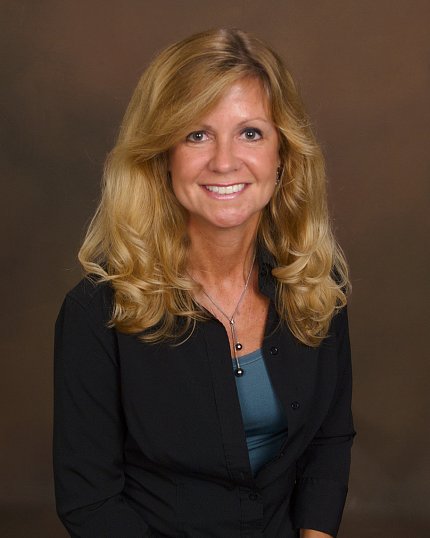
Dr. Kelly Ten Hagen has made important scientific discoveries at the National Institute of Dental and Craniofacial Research (NIDCR). But she believes her greatest accomplishment has come from her involvement in NIH’s efforts to address workplace harassment in all its forms.
“The anti-harassment initiatives here at NIH and extramurally will hopefully create safer, more inclusive, diverse and equitable environments for everyone,” said Ten Hagen, associate scientific director and head of NIDCR’s developmental glycobiology section.
Her lab studies the enzyme family and factors that regulate protein O-glycosylation and how this conserved protein modification influences organ development and function. Her team was the first to demonstrate that a conserved protein modification called O-glycosylation is essential for viability.
“I’ve been blessed with so many amazing, talented, brilliant people over the years who have made this possible,” she said.
She came to NIH after Dr. Lawrence Tabak, who is now performing the duties of NIH director, became NIDCR director. Ten Hagen had been working as a research assistant professor at the University of Rochester. Once at NIH, she pursued her own research and competed for a tenure-track position.
In 2012, Ten Hagen began serving as NIDCR’s representative on the NIH women scientists advisors (WSA) committee. Formed in 1993, the group raises awareness of issues facing women scientists and works towards improving women’s representation in the NIH faculty at all levels. The WSA is celebrating its 30th anniversary this year.
“A major barrier was the inappropriate behavior and harassment that I and other women had to endure,” she said. “There was no mechanism at the time to report it anonymously and have it investigated centrally, to avoid any conflicts of interest within institutes and centers.”
That’s changed. Today, the Civil program receives allegations of inappropriate conduct, including all forms of harassment, and oversees the appropriate administrative review or inquiry in an objective and consistent manner. Civil’s goal is to stop any inappropriate or harassing behaviors immediately and to ensure that timely corrective action is taken.
Ten Hagen also served on the advisory committee to the NIH director working group on changing the culture to end sexual harassment. The group made suggestions to address harassment at NIH-funded institutions.
While the workplace has become more diverse, women are still underrepresented as “they move up the ladder.” For example, women make up only 27% of senior investigator positions. Balancing childcare and work is one of the biggest challenges. The Covid-19 pandemic illustrated that women carry a heavier domestic workload.
Inherent biases are another challenge for women in scientific careers, Ten Hagen said. For example, the John vs. Jennifer study found that implicit gender bias disadvantaged women who were pursuing STEM careers. Researchers asked scientists to review identical resumes with only one difference—the name at the top.
“Compared to Jennifer, John was rated more competent, more hirable and offered a higher starting salary,” she said. “These biases put women at significant disadvantages. They must be addressed.”
She advised those thinking about pursuing a career in science to look into an institution’s culture before considering a position. Many places are doing “really interesting work but if they aren’t supporting their people or if the environment is toxic, it will take a toll.”—Eric Bock
Tackling ‘Pernicious Challenges’ for Women

Lucy Forrest initially aspired to be a linguist—until she realized that she could learn languages on her own. “I realized that what I actually needed to do was study something that I couldn’t learn on my own,” she said. “So, I took chemistry classes.”
She added a computing major to her chemistry studies and went on to receive her Ph.D. in biochemistry at the University of Oxford. She conducted postdoctoral research at Johns Hopkins and Columbia universities, and the Medical Research Council Mitochondrial Biology Unit in Cambridge. Forrest then took a position at the Max Planck Institute for Biophysics in Frankfurt, Germany, before settling at NINDS in 2013. She now leads the computational structural biology section.
Her research seeks to understand cell membrane proteins by asking questions about a wide range of topics from specific mechanisms of individual proteins to general biophysical principles.
These proteins are difficult to study, Forrest said, and researchers often need to make predictions about the proteins’ structures. Her research seeks to understand “what [they] tend to look like, what the rules are that define what they look like and how we can use those rules to make predictions.” Her work has implications for studying proteins involved in conditions such as depression, Parkinson’s and cancer.
Forrest is also a dedicated mentor and advocate for women in science, both within her own lab and the larger NIH community. She is NINDS’s representative on the WSA committee.
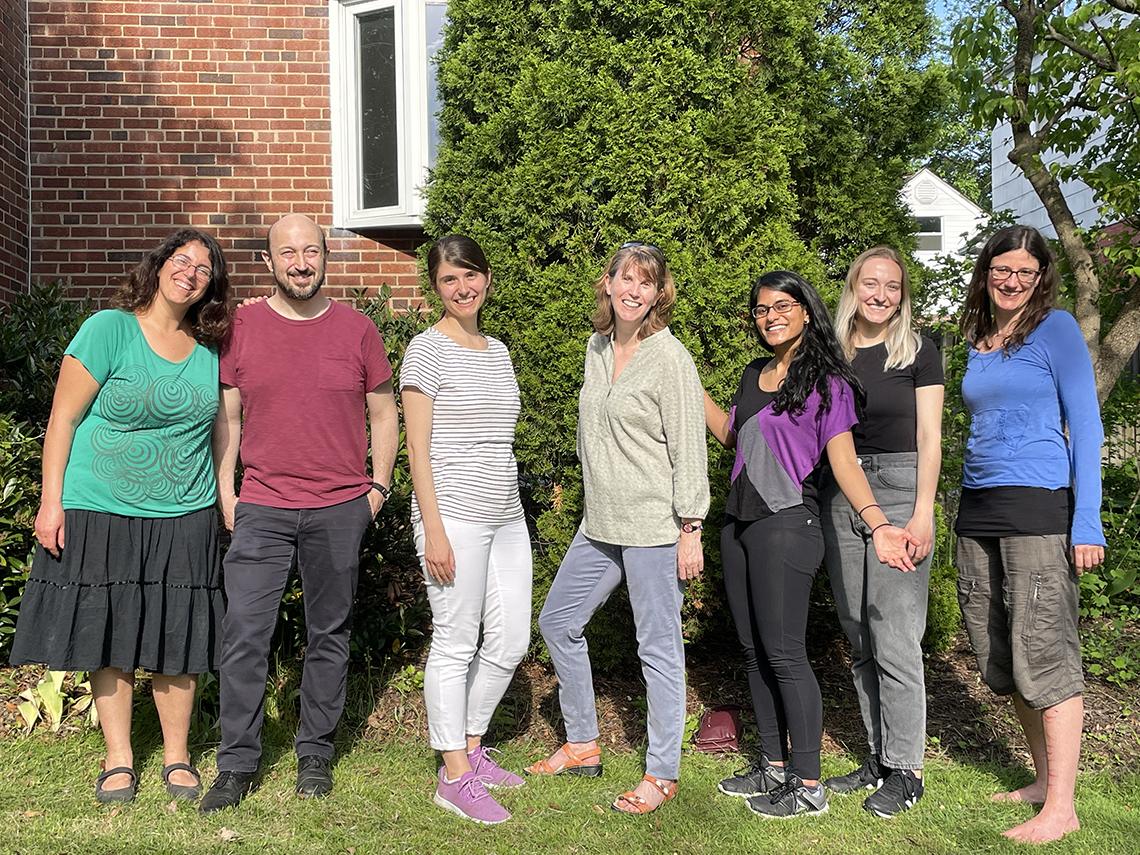
“I’m [also] very proud of the young people who have come through my lab and the places they’ve ended up,” she said.
Forrest is especially conscious of the challenges women face in science. Much of the casual sexism she encountered in the beginning of her career is gone, she said, but implicit bias is a “much more pernicious challenge.” She describes it as “a slight devaluation of what [women] do…that creates many little molehills that add an extra level of struggle.”
She encourages women to “see their community as a resource.” She would like for women to turn to each other more often for support and “[think] about how to reach out to allies and work together to solve problems.”—Amber Snyder
Based on encouraging feedback and thoughtful suggestions the Record received, this will not be the last series of profiles we publish. Keep following for future short takes with staff.
